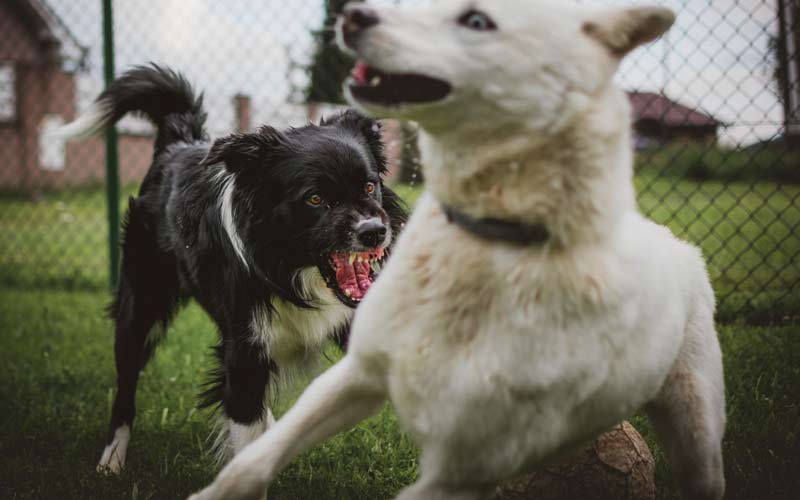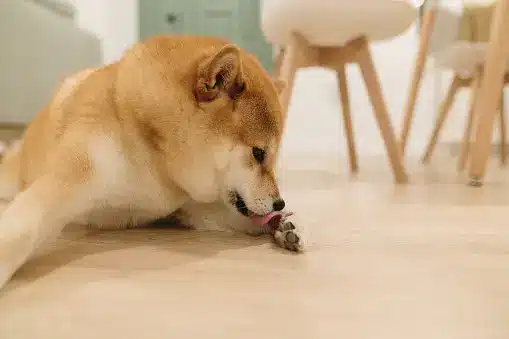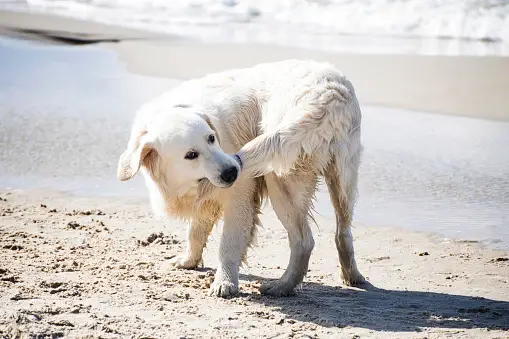Addressing dog aggression is crucial in creating a harmonious environment for your furry companions. This blog aims to guide you through effective strategies to stop dog aggression towards other dogs. By understanding the root causes and implementing preventive measures, you can foster positive interactions between your pets. Let’s delve into the insightful structure of this blog and explore key points to help you navigate through this challenging issue.
Understanding Dog Aggression
Fear and Anxiety
When fear and anxiety drive a dog’s behavior, it can lead to dog aggression. These emotions may stem from past traumatic experiences or a lack of socialization. Recognizing signs of fear and anxiety in your dog is crucial to address the root cause of their aggression. By creating a safe and secure environment, you can help alleviate these negative emotions.
Genetic Factors
Genetic factors play a significant role in shaping a dog’s temperament and behavior. Certain breeds may have predispositions towards aggression due to their genetic makeup. Understanding your dog’s breed characteristics can provide valuable insights into potential aggressive tendencies. Proper training and socialization tailored to your dog’s breed can help mitigate aggressive behaviors stemming from genetic factors.
Types of Aggression
Inter-dog Aggression
Inter-dog aggression occurs when dogs display aggressive behavior towards other dogs, whether within the same household or unfamiliar settings. This type of aggression can result from resource guarding, competition for attention, or territorial disputes. Addressing inter-dog aggression requires careful observation of triggers and implementing strategies to promote positive interactions between the dogs.
Dominant Behavior
Dominant behavior in dogs can manifest as aggressive tendencies towards other dogs in an attempt to assert control or establish hierarchy. It is essential to recognize signs of dominant behavior early on and take proactive measures to prevent escalation. Establishing clear boundaries, providing consistent leadership, and promoting respectful interactions can help curb dominant behavior towards other dogs.
Identifying Aggression Triggers
Environmental Triggers
Environmental triggers, such as loud noises, unfamiliar surroundings, or crowded spaces, can provoke aggressive responses in dogs. Creating a calm and predictable environment for your dog can reduce stressors that contribute to aggressive behavior. By minimizing environmental triggers, you can help your dog feel more secure and less likely to exhibit aggression towards other dogs.
Social Triggers
Social triggers, including interactions with unfamiliar dogs, changes in routine, or lack of socialization, can trigger aggressive reactions in dogs. Proper socialization from an early age and exposure to various environments can help desensitize your dog to social triggers. Building positive associations through controlled introductions with other dogs can gradually reduce reactivity and promote harmonious interactions.
Preventive Measures
Spaying and Neutering
When it comes to spaying and neutering, these procedures can play a significant role in reducing dog aggression. Let’s delve into the benefits of each:
Benefits of Spaying
Spaying your female dog not only prevents unwanted litters but also reduces the risk of certain health issues. By spaying your dog, you can eliminate the possibility of uterine infections and reduce the chances of mammary tumors, promoting her overall well-being.
Benefits of Neutering
Neutering male dogs can help decrease aggressive behavior towards other dogs. This procedure not only curbs roaming tendencies but also lowers the risk of testicular cancer and prostate problems. By neutering your dog, you contribute to a calmer demeanor and a healthier life for your furry companion.
Regular Exercise
Engaging your dog in regular exercise is essential for maintaining physical health and mental balance. Consider the following benefits:
Physical Benefits
Regular walks or runs help keep your dog physically fit, preventing obesity and related health issues. Exercise also aids in releasing pent-up energy, reducing the likelihood of aggressive outbursts towards other dogs.
Mental Benefits
Physical activity stimulates your dog’s mind, promoting mental stimulation and preventing boredom. A mentally stimulated dog is less likely to exhibit destructive behaviors or aggression towards other dogs. Incorporating playtime and interactive activities further enhances your bond with your pet.
Establishing Boundaries
Setting clear boundaries is crucial in shaping your dog’s behavior and preventing dog aggression. Here are key aspects to consider:
Consistent Rules
Consistency in enforcing rules helps establish a structured environment for your dog. By setting clear expectations and consistently reinforcing positive behaviors, you create a sense of security that reduces anxiety and potential triggers for aggression towards other dogs.
Promoting Submission
Encouraging respectful interactions through positive reinforcement fosters submission in your dog’s behavior. Teaching commands like “sit” or “stay” reinforces obedience and respect for authority, minimizing confrontational behaviors towards other dogs.
Training Techniques
Positive Reinforcement
Implementing positive reinforcement techniques is a powerful way to shape your dog’s behavior positively and encourage desirable responses. By utilizing rewards such as treats, praise, or toys, you can reinforce good behavior and establish a strong bond with your furry companion.
Reward-Based Training
In reward-based training, focus on rewarding your dog immediately after displaying the desired behavior. This instant positive feedback helps your dog associate the action with a pleasant outcome, increasing the likelihood of repetition. Consistency in rewarding good behavior reinforces the desired actions and reduces the occurrence of dog aggression towards other dogs.
Avoiding Punishment
When addressing dog aggression, it is crucial to avoid punitive measures that can escalate negative behaviors. Punishment may instill fear or anxiety in your dog, leading to further aggression issues. Instead of punishment, redirect your focus on positive reinforcement to promote a harmonious relationship between your dog and other dogs.
Counter-Conditioning
Counter-conditioning involves changing your dog’s emotional response to specific triggers by associating them with positive experiences. This technique aims to replace negative reactions with calm and relaxed behaviors, ultimately reducing dog aggression towards other dogs.
Desensitization Techniques
Through desensitization techniques, gradually expose your dog to triggering stimuli at a comfortable distance. Monitor your dog’s reactions closely and reward calm behavior during exposure sessions. Over time, increasing proximity while maintaining a positive environment can help desensitize your dog to previously anxiety-inducing situations.
Gradual Exposure
Gradual exposure involves introducing your dog to challenging situations in small increments, allowing them to acclimate at their own pace. By slowly increasing exposure levels while providing positive reinforcements, you can help build your dog’s confidence and reduce reactivity towards other dogs.
Professional Training
Seeking professional training services can provide specialized guidance tailored to address your dog’s unique needs and challenges effectively. Working with experienced trainers or behaviorists offers valuable insights and structured programs to manage and modify dog aggression behaviors.
Working with a Trainer
Collaborating with a certified trainer allows for personalized training plans based on your dog’s temperament and triggers. Trainers can offer expert advice on implementing effective strategies, monitoring progress, and adjusting techniques as needed to address dog aggression towards other dogs successfully.
Behavioral Therapy
Behavioral therapy focuses on identifying underlying causes of dog aggression and developing targeted interventions to modify problematic behaviors. Through structured sessions and behavioral modification techniques, therapy aims to improve emotional responses, enhance social interactions, and promote long-term behavioral changes in dogs.
Professional Help
Veterinary Consultation
When seeking veterinary consultation for your dog’s aggression towards other dogs, it is essential to address any medical causes that may contribute to this behavior. A thorough examination by a veterinarian can help identify underlying health issues that might be influencing your dog’s aggression. By ruling out medical conditions such as pain, hormonal imbalances, or neurological disorders, you can develop an appropriate treatment plan to manage your dog’s aggressive tendencies effectively.
Medical Causes
Various medical conditions can manifest as dog aggression towards other dogs. Pain or discomfort due to injuries, arthritis, or dental problems can trigger aggressive responses in dogs. Additionally, hormonal imbalances like thyroid issues or adrenal gland disorders may impact your dog’s behavior and contribute to heightened aggression levels. Identifying and addressing these medical causes through veterinary intervention is crucial in mitigating dog aggression and promoting your pet’s overall well-being.
Treatment Options
Upon diagnosing any underlying medical causes for your dog’s aggression, veterinarians can recommend tailored treatment options to address these issues effectively. Treatment may involve medication to alleviate pain or regulate hormonal imbalances that could be influencing your dog’s behavior. Behavioral modifications and environmental adjustments may also be suggested to support the treatment process and promote positive interactions with other dogs. Collaborating closely with your veterinarian ensures a comprehensive approach to managing dog aggression towards other dogs.
Qualified Behaviorists
Engaging with qualified behaviorists offers specialized expertise in understanding and modifying dog aggression behaviors. These professionals are trained to assess behavioral patterns, identify triggers, and implement targeted interventions to address aggressive tendencies successfully. Seeking the guidance of a qualified behaviorist can provide valuable insights into your dog’s emotional responses and establish long-term solutions for managing aggression towards other dogs effectively.
Finding a Specialist
When looking for a behavior specialist, consider individuals with extensive experience in dealing with dog aggression cases specifically related to interactions with other dogs. A specialist who understands the complexities of canine behavior and employs evidence-based techniques can offer tailored strategies to address your dog’s unique needs. Researching reputable behaviorists and seeking recommendations from trusted sources can help you find a specialist best suited to assist you in managing aggression towards other dogs.
Long-Term Solutions
Behavioral modification aimed at addressing dog aggression requires a commitment to long-term solutions that promote lasting behavioral changes in your pet. Qualified behaviorists work collaboratively with pet owners to develop personalized training plans, implement positive reinforcement techniques, and monitor progress over time. By focusing on building trust, enhancing social skills, and modifying negative behaviors gradually, long-term solutions aim to create a harmonious environment where your dog can interact positively with other dogs.






